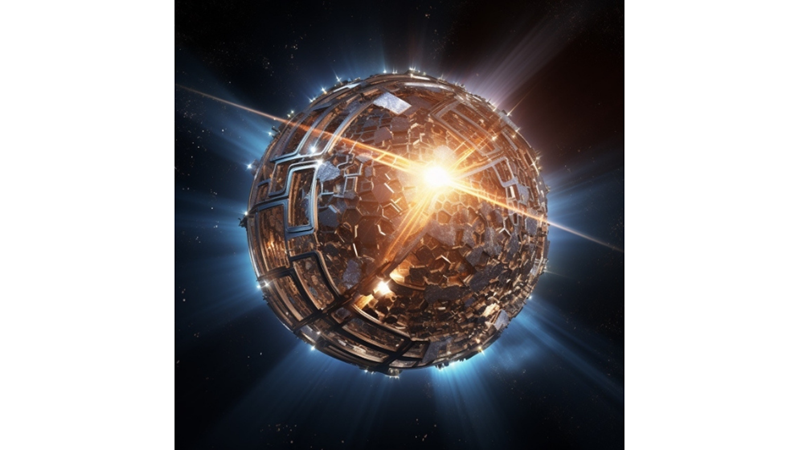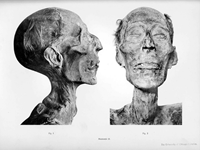In 1960, the legendary physicist Freeman Dyson published his seminal paper "The Search for Artificial Stellar Sources of Infrared Radiation", in which he suggested that there may be extraterrestrial civilisations advanced enough to build megastructures large enough to surround their host stars.
He also stated that these "Dyson Spheres" could be detected on the basis of the "waste heat" they emit at mid-infrared wavelengths.
To date, infrared signatures are recognised as a viable technological signature in the Search for Extraterrestrial Intelligence (SETI).
So far, efforts to detect Dyson Spheres (and their variations) with "waste heat" signatures have come up empty, leading some scientists to suggest changing the search parameters.
In a new paper, Jason T. Wright, Professor of astronomy and astrophysics at the Centre for Exoplanets and Habitable Worlds and the Penn State Center for Extraterrestrial Intelligence (PSTI), suggests that SETI researchers improve the search by looking for signs of activity. In other words, he suggests searching for Dyson Spheres based on what they can be used for, rather than just their heat signature.
Key to Wright's work is the Landsberg Limit, a concept in thermodynamics that represents the theoretical efficiency limit for harvesting solar radiation.
This is vital as Dyson's original proposal was largely based on the idea that all life utilises free energy gradients, such as photosynthetic life forms that rely on this to produce oxygen gas and organic food.
He also argued that technologically advanced life can grow to exploit greater amounts of this energy. But there is an absolute limit to this ability: the total energy released from a star (visible light, infrared, ultraviolet, etc.).
Since energy must be conserved, Freeman Dyson thought that some of this energy should be expelled from the Dyson structure as waste heat. Taking advantage of advances in infrared astronomy, a developing field in Dyson's time, astronomers could theoretically measure the energy used by an advanced civilisation by searching for this heat.
To date, only three all-sky mid-infrared studies have been conducted, including the Infrared Astronomical Satellite (IRAS), the Wide-field Infrared Survey Explorer (WISE) and AKARI.
"Traditionally we look for infrared emission from stars to see if they have hot orbital material from starlight," Wright told Universe Today via email.
"If it's not the kind of star that typically has material in its orbit, then we can take a closer look to see if the material looks like dust or something else."
But all research to date has been somewhat hampered by the lack of a fundamental theory of what waste heat would look like, as the properties of the materials of a Dyson Sphere are unknown.
Several theoretical models have been proposed by astrophysicists (including Wright himself) of what their thermal signatures might look like, but they are rather simplistic and based on a large number of assumptions.
While these include the spherical symmetry of the crust and its orbital distance from the star, they fail to predict the typical temperatures, radiative interactions or optical depths of the material.
This raises another vital concept that Wright takes into account, which is related to the purpose of the Dyson structure (what "job" does it do?), from which inferences can be made about material properties.
Dyson recognised that capturing the energy of a star was only one possible motivation for building such a megastructure. For example, some SETI researchers have suggested that a Dyson structure could be used as a stellar engine (a Shkadov Thruster) or a gigantic supercomputer (a Matrioshka Brain) that could move stars.
The Matrioshka Brain, like its namesake, has a nested structure in which the inner layer absorbs direct sunlight and the outer layers use waste heat from the inner layer to optimise computational efficiency.
Moreover, Wright addressed the engineering challenges of building such a structure. While Dyson focused on the laws of physics as the sole basis for the existence of megastructures, Wright also considered engineering practices.
From this, he suggested that civilisation could be motivated to gradually build sections of a Sphere to gradually increase the habitable volume around a star.
With all this in mind, Wright applied radiation thermodynamics to Dyson spheres as computational machines and what the observable results would be.
He concluded that there was little or no advantage to creating nested shells and that the optimal use of mass would favour smaller, hotter Dyson spheres. He also noted that there would be observable differences between "completed" Dyson Spheres (fully assembled around a star) and those still under construction.
As Wright explains:
"Contrary to the expectations of some authors that Dyson spheres must be extremely large and cold to maximise their efficiency, I find that the optimum configuration for a fixed mass budget is actually very small, hot spheres that capture most but not all of the escaping light. [We can] extend our search parameters to temperatures well above 300K (slightly hotter than Earth), because the work of extracting starlight is more effective close to the star, where everything is hotter."
These findings could help inform future searches for Dyson structures, but unfortunately these searches are currently limited.
The work of astrophysics PhD student Mathias Suazo (Upsalla University) and his colleagues in the Hephaistos Project is a notable exception.
Presenting their work at the 2nd Annual Penn State SETI Symposium in June, Suazo described how project scientists combined data from ESA's Gaia Observatory, the Two Micron All Sky Survey (2MASS) and NASA's Wide-field Infrared Survey Explorer (WISE) to narrow down the search for thermal signatures that might indicate the presence of megastructures.
The combined data revealed about 5 million possible candidates within a volume ~1,000 light-years in diameter. After creating a "best-fit" model based on temperature and brightness profiles that eliminated possible natural sources, Suazo and his team narrowed the list down to 20 suitable candidates.
These sources will probably be subjected to follow-up observations by new generation telescopes in the near future. In the meantime, research continues, and while no conclusive evidence for megastructures has been obtained, the possibility remains.
As Dyson famously said when discussing possible motivations for such engineering, "My rule is that, provided it is physically possible, there is nothing so big or so crazy that one in a million technological societies would not feel impelled to do it."
If only a handful of advanced civilisations in our galaxy are engaged in mega-engineering projects, sooner or later we will smell them!
Source: https://www.sciencealert.com/


 Nielawore
Nielawore










Yorum yazmak için lütfen giriş yapınız